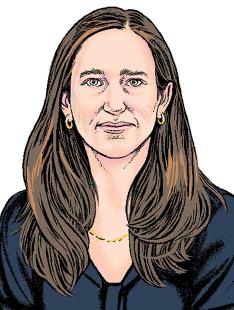Becoming a professor, Ostriker followed in her parents’ footsteps — her father, Jeremiah, also an astrophysicist, served as provost and professor at Princeton, and her mother, Alicia, is a poet and professor emeritus at Rutgers. Now the Lyman Spitzer, Jr. Professor of Theoretical Astrophysics, Eve Ostriker specializes in the study of the interstellar medium, or the gas that exists between stars. She’s now pursuing several research projects on “star formation feedback.” As Ostriker explains, “When stars form out of interstellar gas, they return energy and mass to their environment.” Ostriker investigates the ways that this “feedback” — in the form of ultraviolet radiation, high-velocity winds, or cosmic rays — interacts with a star’s surroundings.
Ostriker’s Work: A Sampling
BUBBLING OVER Ostriker studies the effects of radiation in molecular clouds, which are clouds of hydrogen and dust where stars are born. When a portion of a cloud collapses, it can form a dense star cluster with a powerful radiation field. This ultraviolet radiation ionizes hydrogen in the cloud, raising its temperature from 10 to 10,000 Kelvin. This shift creates a huge increase in pressure that forces gas out of the cloud in a “champagne flow” pattern — resembling the frothing foam from an uncorked bottle. Ostriker uses both computational models and theory to investigate how radiation interacts with hydrogen gas to produce this flow.BLOWN AWAY Massive stars — which may be 10 times the mass of our sun — generate winds that move at 1,000 kilometers per second or more. When these winds collide with interstellar gas, it creates a shock that converts kinetic energy into thermal energy, creating a bubble of high-temperature gas. This hot gas produces less X-ray emission than expected. Ostriker’s research team has developed a theory to explain why. They believe that the edge of the hot bubble forms a jagged interface called a fractal, which has a larger area that encourages mixing. Turbulence at the edge of the bubble mixes cool gas with hot, resulting in rapid cooling and lower-frequency emission.
MIGHTY RAYS The shock from a supernova, or an exploding dead star, can cause a tiny fraction of the particles it encounters to accelerate close to the speed of light. These super-charged particles are known as cosmic rays. Although cosmic rays constitute only one part per billion of the total mass of our galaxy, they contain nearly as much energy as the rest of the gas in our galaxy combined. Ostriker is studying two aspects of their behavior. First, she’s investigating how cosmic rays scatter off of small magnetic fluctuations, and how this affects their propagation through interstellar clouds. Second, she’s analyzing how cosmic rays flow through galaxies and how they might contribute to accelerating galactic winds.




